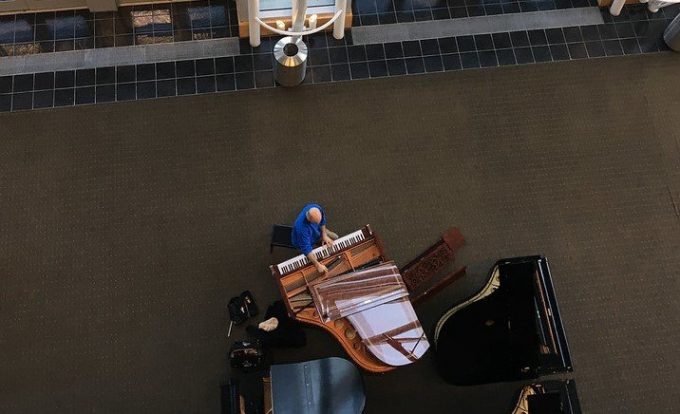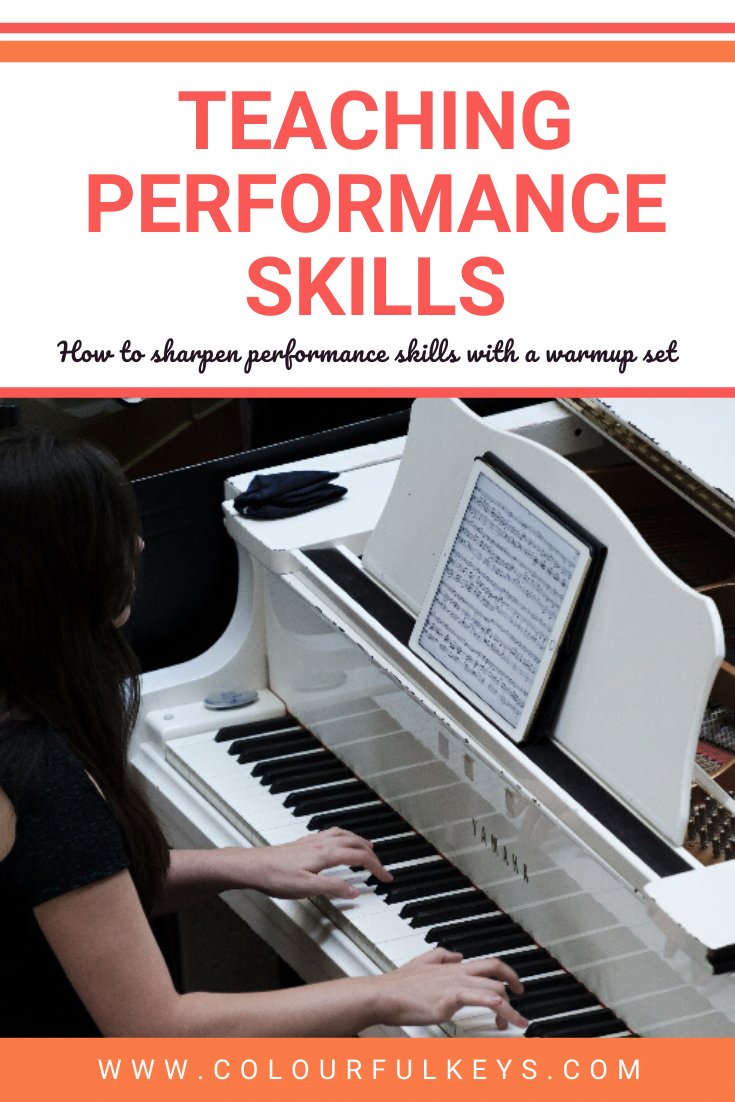Imagine you walk into a music shop with oodles of beautiful refurbished grand pianos: Faziolis, Steinways, Kawais, Yamahas…you name it, they have it. You sit down at your chosen instrument to test it out – what do you play?
Chances are, you have a go-to piece that you like to play to settle in. It could be an old-favourite or whatever you’re currently working on for a gig, but you know what it would be, right?
Could your students say the same?

As piano teachers, the temptation is often to push forward, onward and upwards. We want to get to the next level and keep our students progressing.
That’s understandable, but it sometimes comes at the expense of giving our students the opportunity to gain true proficiency along the way. Students need to feel the sense of progress and, often, review is necessary to embed that feeling.
The challenge? For me, and for many teachers, it’s fitting this review in. We need to find a way to provide this review and mastery that fits sustainably in our lesson plans.
Enter the Warmup Set
I had the idea for building a “warmup set” with my students when I was thinking about piano tuners…

Have you ever known a tuner who only knows how to play 1 piece that they use for testing? There are quite a few out there! Even tuners who do play normally have a standard piece that they use for testing a freshly tuned piano when they’re finished.
While this idea of a go-to piece is covered somewhat by my Anyone, Anywhere, Anytime challenge, I wanted to go a little further. I wanted my students to have a few pieces that they could not just perform at the drop of a hat but could also play so automatically that they keep a conversation going, do mental arithmetic or balance a plate on their head while they played. (Ok, not quite, but you get my drift.)
This is especially important for those students who struggle with performance skills in general, or have battles with their nerves even when playing just for me. If every piece is prone to stumbles and stutters, then it feels extra amazing to have something you are sure you can play well.
How to Start a Warmup Set Habit
This is really a very simple concept; all it takes is consistency.
- Get your student to choose 1 piece that they either have memorised or want to memorise.
- If it’s not memorised yet, help them through the memorisation process.
- Ask to hear it at the start of every lesson. (That’s every single lesson – no exceptions!)
Once they have 1 piece successfully on-the-go you might consider adding another or starting to alternate between 2 pieces each week.
Eventually, they might want to swap out an old favourite for a new one. Just make sure they’re not changing on a monthly basis. Remember the goal is playing automatically, where they can really get into the flow of this piece whenever they want.
Do you have a warmup set tradition?
Perhaps you call it something else, or maybe the “rules” are a little different? In the comments below, share how you give the students in your studio that sense of proficiency.
For more tips and tricks to help your students with practice skills, including memorisation, visit my centralized page all about practice.

I started doing this for myself, where I have several short memorized pieces that I call Piano Miniatures, ready when needed. I even created a page about it on my Website – something about publishing it makes me more accountable – even if no one reads it!
It’s great to have these ready, like when I decided to add a Chopin Waltz to close a recital given by my students at a retirement home. I didn’t have to play for them, but they were gracious enough to listen to my kids play, so why not add a short piece to thank them!
You’ve got so many great ideas that I’m soon going to have to stop teaching 30 minute lessons to implement them all!
That’s awesome that you have this list for yourself, Broc. It’s a great habit to keep up.
PS Make the switch away from 30 minutes if you can! You won’t know yourself. 🙂
Wait. “Make the switch AWAY from 30 minutes”??? Where can I read more about that philosophy and what it entails? I often find that 30 minutes are too short — til we play games, play the pieces that we’re working on, chat a bit, maybe hit a “teachable moment rabbit trail”, the time is up too quickly! Thank you!
At some point, I think all teachers probably curse the person who came up with 30-minute lessons, right Karen?! Here is a post which explains how to make any change in your studio business. (One of the examples used is switching to longer lessons.) If you’re absolutely stuck on 30-minute lessons, though, you might find some helpful tips in this article. I hope that helps!
I love this. I really want to do that. Thanks for posting.
Instead of a learned piece, I’m focusing on Improvisation. I’d like my students to be able to create their own patterns and be able to play long after lessons have ended.
Yes, absolutely! Super important too. 🙂
Yes!! That is what I missed out on when I took lessons many moons ago. Trying to make up for it now.
Good day,
The students normally have what I refer to as “Preparation Time” (2 min.) at the start of each lesson, where they can play absolutely anything they want to. I also encourage them to make up their own tunes.
However, I love the idea of a Warm-Up piece (s) as this gives it more structure, is goal oriented and definitely more beneficial.
Taking this up with immediate effect!
Thanks 🙂
Hope you have fun with it Lola!
My students have a collection of 3 – 5 “Favorite Pieces” that are memorized and performance-ready for this reason! It’s fantastic for when grandma comes to visit or other circumstances. In my studio, at recital time, students choose their most favorite of the Favorite Pieces for the recital – no matter how hard/easy/impressive/unimpressive it sounds. That way, 1) kids are playing music they love, not what an adult thought they *should* play and 2) learning doesn’t have to stop just because a recital is around the corner.
If students fall in love with a piece, they “get” to memorize it and add it to their collection. If you plant that idea when students are little, then they believe you that it’s an honor to memorize a piece 😉 I write the title of the piece on a slip of paper and put it in a plastic bag that goes home with them. Every day, they’re supposed to choose 1 piece of paper from the bag to do memory maintenance work with. Each week, I ask to hear one Favorite Piece in the lesson. Some kids initially won’t do the maintenance steps and the memory fades, but then they can’t play it for me. We use lesson time to go through the memory maintenance steps and re-memorize the piece. Then they’re usually motivated to follow the at-home practice instructions!
That’s fantastic! Lucky students getting to memorise so many pieces. 😉
Love this!!
Thanks Julie!
Love this!! I’m definitely incorporating it into lessons this year!